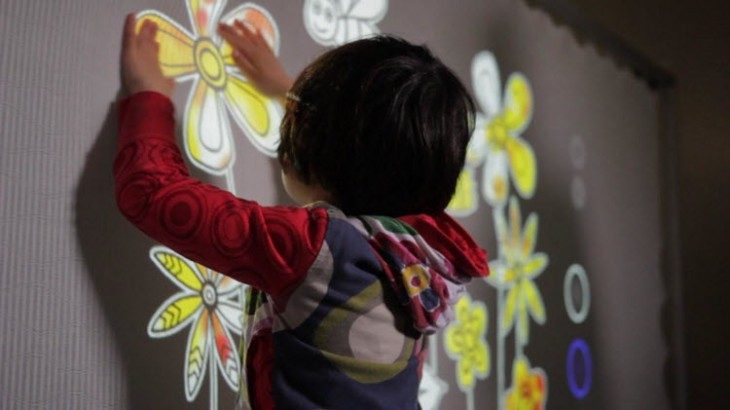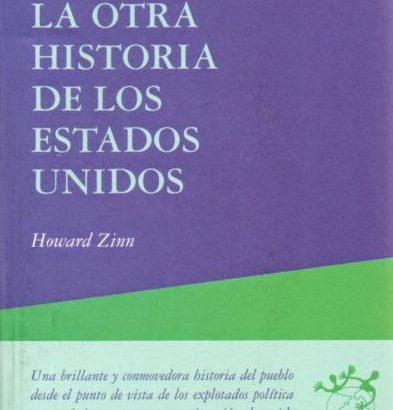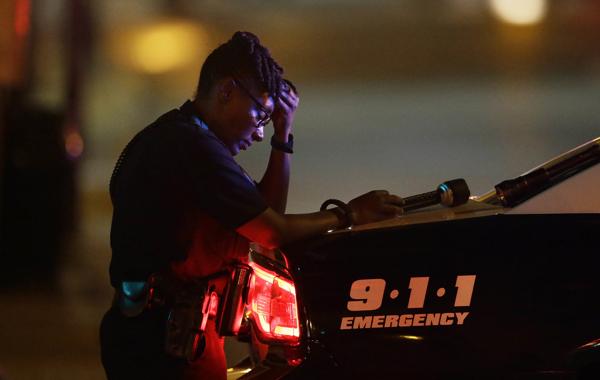América del Norte/Estados Unidos/ Julio de 2016/Autor: Antonio Ramírez/Fuente: elquimericolector
Autor: Zinn Howard
Editorial: HIRU
Año de Edición: 1997
Género: Ensayo
ISBN: 9788489753914
Es un hecho incuestionable que la Historia oficial está escrita por los vencedores, aquellos que lograron hacerse con el poder y mantenerlo a toda costa. Esta versión de la Historia, como es evidente, estará dispuesta para justificar cuantos abusos, traiciones y violencias han sido necesarios para llevarlos hasta su posición. Es por ello que desentrañar y comprender la Historia, pero trascendiendo su versión oficial, se convierte en tarea vital para toda persona que quiera discernir el presente lo más claramente posible. Ahora, como por ejemplo ocurre en España, cuando tantos abogan por no “remover” el pasado en nombre de no se sabe muy bien que espíritu de reconciliación, se hace imprescindible resistir la tentación de ceder al olvido, pues eso significaría condenar a los vencidos a ser doblemente vencidos, sepultarlos para siempre en su derrota y así, acatando la Historia oficial (y por tanto, aceptando acríticamente el presente), heredaríamos nosotros mismos el papel de vencidos sin haber presentado la más mínima batalla.
Howard Zinn escribió su historia alternativa de los Estados Unidos con el espíritu del que no quiere olvidar y se empeña en remover ese pasado que muchos preferirían mantener oculto o cuanto menos tergiversado. Y lo hace como un acto de justicia, porque las consecuencias del pasado no se han mitigado ni han sido superadas, puesto que cada día son sufridas por millones de personas en el presente. Es por ello que su labor de historiador, que no se reduce a lo académico o a la mera divulgación, se convierte en una eficaz herramienta para todo aquel que quiera emprender el análisis crítico de nuestras sociedades actuales. Y teniendo en cuenta la persistente influencia (por activa y por pasiva) que los Estados Unidos han mantenido sobre el resto del mundo en los últimos 250 años esta “otra” historia de los Estados Unidos de Howard Zinn alcanza el máximo interés para los lectores de cualquier nacionalidad.
Partiendo desde este planteamiento el propio Zinn deja claro que su libro es tendencioso. Admite que se trata de “un informe que se inclina en cierta dirección”. No obstante, también afirma que “la montaña de libros de historia bajo la cual nos encontramos se inclina claramente en la otra dirección. Son libros respetuosos -a pie puntillas- con los estados y los hombres de estado y tan irrespetuosos -por su falta de atención- hacia los movimientos populares, que necesitamos alguna clase de fuerza opuesta para no ser aplastados en la sumisión”. En mi opinión esto le honra aún más si cabe, puesto que demuestra una actitud militante y desafiante que se aleja del tono pretendidamente neutro que tantos académicos e intelectuales de todos los campos suelen aplicar en su labor. Zinn dota a su libro de un espíritu crítico y estrictamente documentado, pero deja espacio para su indignación, también para su solidaridad ante muchos de los hechos que narra. Y yendo aún más lejos, se permite ser utópico, proponiendo (aunque a grandes rasgos) algunas de las alternativas posibles que bajo su punto de vista podrían cambiar la sociedad americana.
Así pues, rompiendo con la Historia escrita al servicio de los vencedores, Zinn se centra entonces en el punto de vista de los vencidos. No obstante, este punto de vista diferente no significa necesariamente que se nieguen muchos de los hechos ofrecidos por el discurso oficial, simplemente son expuestos bajo otra luz, desprovistos ahora de ese aura de gloria y justificación del poder que los libros para escolares suelen entrañar y que en esencia ha servido para que generaciones y generaciones de personas interpreten la realidad desde una perspectiva ideológica acorde con el sistema dominante. Ocurre así, por ejemplo, con el mismo inicio del relato: el descubrimiento de América por Cristobal Colón. Lejos de presentar este hecho como una aventura heroica y alentadora para la humanidad, Zinn hace hincapié en el genocidio que supuso para los pobladores americanos originales, demostrando con datos y testimonios hasta que punto la ignorancia, la avaricia y la crueldad fueron los verdaderos motores de un terrible espíritu colonizador que jamás se aplacaría con el transcurso del tiempo y que incluso terminaría por extenderse a otros puntos del globo.
El libro de Zinn, que ha sido titulado en España como La otra historia de los Estados Unidos se llama originalmente A people´s History of the United States, es decir, un balance histórico de los movimientos sociales en los Estados Unidos. Lo cual implica que este libro no es simplemente un lamento por las víctimas, es algo más importante: el retrato de la resistencia de una gran parte de los estadounidenses frente a la injusticia y la violencia de sus gobernantes. Pero, lejos de idealizar al pueblo americano, el texto es también un detallado repaso de hasta que punto éste se ha dividido en numerosas ocasiones entre, por un lado, los que han acatado interesadamente la injusticia estructural, redirigiéndola en su propio beneficio hacia los que aun estaban más abajo que ellos y, por otro lado, los que han preferido solidarizarse y sumarse a la lucha de los más oprimidos, cueste lo que cueste y asumiendo (con mayor o menor fortuna) una unión que superaba distinciones raciales, clasistas o de género.
Articulando la Historia de los Estados Unidos en torno a los individuos, movimientos y organizaciones que de una u otra manera han plantado cara al poder, Zinn establece una panorámica amplia y muy detallada de lo que en esencia ha denominado “una cultura de oposición permanente”, la cual jamás ha dejado de existir en ninguna circunstancia, ni aun cuando la represión era salvaje, como ocurría con los esclavos negros (que no han sido solo las víctimas propiciatorias que siempre nos han mostrado en películas y libros), ni cuando las condiciones de vida habían mejorado de una forma más generalizada y la lucha de clases, el sindicalismo o la denuncia del racismo parecían tener menos sentido. Zinn demuestra con datos y con multitud de testimonios, que bajo la superficie del supuestamente feliz american way of life siempre ha existido una descontento arraigado en una gran parte del pueblo estadounidense, siempre listo para explotar.
Así pues, este libro es un informe cronológico de esa cultura de oposición permanente que contradice la Historia oficial, lejos de la visión ramplona del pueblo de los Estados Unidos rendido ante los valores del capitalismo, la moral puritana, el patriarcado o las clasificaciones raciales ideadas por los blancos. La mitad del libro está dedicado a la etapa que va desde Colón hasta el fin de la Guerra de Secesión, centrándose mucho en las condiciones de vida de los negros, los indios o las mujeres y documentando de que manera la fundación de los Estados Unidos, comenzando por la propia Declaración de Independencia y la Constitución, fue diseñada para beneficio de unos intereses políticos y económicos que si bien se presentaban al resto del mundo como el ideal para todos los seres humanos eran, en esencia, los del Hombre, Rico, Cristiano y Blanco. De esta manera, el país creció y se alimento sobre unos principios que resultaron calamitosos en primer lugar para los negros y los indios, sobretodo usando el trabajo esclavo de los primeros, negándoles cualquier tipo de derechos sociales, económicos y culturales. Por ello Zinn se maravilla de la capacidad de los negros de crear una tan rica cultura oral bajo unas condiciones de ese tipo, sabiendo transmitirla de una manera marginal pero perenne, especialmente con la música nacida del inmenso sufrimiento sufrido en las plantaciones y ranchos por generaciones y generaciones de esclavos. Por su parte, los indios se vieron casi extinguidos bajo la violencia genocida. Los pocos supervivientes fueron expoliados de sus tierras mediante la traición y el engaño implícitos en tratados gubernamentales (y también en acuerdos privados con empresas o individuos poderosos) ya de por si escandalosamente injustos y que a la larga no se llegaban ni a respetar. Algo que ocurrió en esta primera etapa de los Estados Unidos, pero que aun hoy en día es motivo de litigios de todo tipo, demostrando que los indios americanos siguen sufriendo las consecuencias de un pasado muy presente.
Una vez dejada clara la situación de la que partieron estos dos colectivos, negros e indios, a día de hoy poblaciones minoritarias pero proporcionalmente muy importantes respecto a la población blanca, Zinn hace hincapié en que la mujeres, aun asumiendo las grandes diferencias dentro de cada contexto socio económico, han sido ellas las que han sufrido la mayor opresión. Es decir, si la población negra en general estaba mal (no solo en la época de la esclavitud, también a comienzos del siglo XX, en la posguerra, en los años 60, etc) las mujeres negras se han llevado la peor parte de esas condiciones. Si el proletariado o el campesinado blanco de la revolución industrial no tenía mucho de que presumir a los negros, dadas las terribles condiciones en que vivían, las mujeres dentro de ese colectivo eran las que más sufrían. Incluso en lo que respecta a la burguesía, pequeña o grande, las mujeres eran relegadas a poco más que lujosos maniquíes y máquinas de parir, educadas para ser encantadoras, bellas, siempre decentes, pero sobretodo sumisas y atolondradas. Por ello, Zinn ocupa mucho espacio de su libro para hablar de la lucha de las mujeres por lograr su emancipación y como esta lucha resultó muchas veces un acicate para otras muchas batallas. La implicación de las mujeres en la abolición de la esclavitud, en el pacifismo, en el sindicalismo radical, en el anti-imperialismo, etc., no puede estimarse a la ligera. Aun a costa de ver sus propias metas subordinadas a un segundo nivel, el coraje, la generosidad y el sacrificio de muchas mujeres fueron imprescindibles para la infinidad de luchas del pueblo americano contra el poder. Por lo demás, Zinn se esfuerza a lo largo de todo su libro por dar protagonismo a muchas personas anónimas, hombres y mujeres, rescatando del olvido sus testimonios, citando sus palabras textualmente de diarios personales, actas de asambleas, taquigrafías judiciales, artículos de publicaciones minoritarias, entrevistas, etc. Por lo que esta “otra” historia de los Estados Unidos se articula sobre la participación activa y directa de los individuos, nunca sobre la propaganda, el programa y las consignas de tal o cual organización. De hecho, Zinn deja ver un claro deje libertario haciendo hincapié en todas las ocasiones que la lucha de los oprimidos se ha efectuado aun en contra de sus propios líderes y como la mayoría de los verdaderos avances se han logrado con la acción directa y la auto organización de las bases sociales, sin necesidad de la participación de mediadores de ningún tipo.
Sin embargo, la radicalidad de Zinn no le impide lanzar algunas tesis que podríamos considerar más bien moderadas. Por ejemplo, aprovecha los capítulos finales para hacer un llamamiento a la llamada clase media (a día de hoy amenazada y en vías de extinción, como era previsible, junto al “Estado de bienestar” que supuestamente nos iba a traer el capitalismo) para que deje de ser una especie de escudo entre la rabia de los que verdaderamente sienten el peso de la opresión (los obreros, los parados, los negros, etc) y la casta superior capitalista. Yo personalmente no entiendo de que manera podría la clase media ayudar a cambiar este sistema de forma profunda. Si de lo que hablamos es de promover unas meras reformas que por fuerza serían parciales y temporales y que en consecuencias no supondrían una verdadera transformación creo que Zinn peca aquí de iluso. Aun así, el debate está ahí y nadie en política tiene en principio la verdad absoluta, pues ésta solo se construye a base de acción y no de mera teoría. Si la clase trabajadora se mantiene o no como el Sujeto Revolucionario de las teorías radicales de antaño es algo aun a comprobar, pero dudo mucho de que la clase media, situada en una posición clave en la administración del actual sistema pueda hacer mucho por cambiar las cosas “desde dentro”. El fin del capitalismo no se podría sustentar en las buenas intenciones del sector progresista de la clase media. Pero bueno, como decíamos antes, ahí queda el debate, el cual podría ser fructuoso o no.
En todo caso, al margen de las reticencias que algunas partes del texto de Zinn pueda provocarnos (depende de cada lector), el valor de este libro es inmenso. Especialmente, al menos bajo mi punto de vista, por la profunda sensación de duda que introduce en el lector respecto a la realidad sociopolítica de una nación como Estados Unidos. Todos los estados fundamentan su existencia en el mito, en una imprescindible relación entre sus instituciones de poder y el imaginario de sus ciudadanos, solo así, arraigando e interiorizando la sensación de veracidad de algo que en realidad no existe se logra la estructura de un poder que no podría ser posible solo mediante la violencia física y la extorsión. Pero en el caso de Estados Unidos esta relación imaginaria se ha llevado hasta límites inauditos, hasta un punto en que ha transcendido sus fronteras y ha logrado inseminarse en el resto del planeta. El mito americano, que es el de la libertad, el de la modernidad, el de la tecnología, el de la democracia y muy especialmente el del capitalismo y las oportunidades que éste aporta para todos sin límites raciales o sociales de ningún tipo, ha conseguido colonizarnos hasta un punto que a veces ni nosotros mismos sospechamos. Pero, aun siendo un mito en toda regla, para llegar a él ha sido necesaria tal dosis de violencia y criminalidad gubernamental que por fuerza ha arrastrado tras de si una tangible realidad sangrienta y dolorosa imposible de ocultar y olvidar. Toda esa ideología patriotera, moralista y guiada los principios del mercado y las corporaciones, sostenida en el símbolo de una bandera común a 50 estados unidos de forma artificial y a costa de la esclavitud y el genocidio de millones de personas, mantenida a fuerza de una economía de guerra permanente alimentada con invasiones, expolios y todo tipo de tropelías en lo que respecta a la política exterior, ha creado por fuerza una esquizofrenia incurable en el pueblo americano, la sensación simultanea de ser verdugos y víctimas de un sistema esencialmente delictivo, irracional y que en última instancia resulta autodestructivo.
Con este libro Howard Zinn nos ha ofrecido un excelente espejo donde mirarnos, siendo como somos parte residual del mito americano, aunque, por supuesto, estemos condicionados por las miserias y desgracias proporcionadas durante tanto tiempo por nuestros propios poderosos. Pero, esencialmente, la crítica a Estados Unidos es la crítica del Estado capitalista que devora y asesina a su pueblo (y por extensión a todo el que se ponga en su punto de mira), por tanto mirarnos en el espejo de esa crítica supone asumir que el capitalismo es igual para todos. Dudar y renegar del mito capitalista, de la libertad tal y como es planteada desde ese mito, es dudar de las bases de nuestra propia realidad social y cultural, pero sobretodo es provocar el deseo de otra realidad. Así pues, si nuestra relación con el mundo y la sociedad se articula en el mito quizás sea el momento de aprender que nuestra imaginación es lo suficientemente amplia como para aceptar únicamente una invención tan terrible y destructiva como ha resultado ser el capitalismo. Si el libro de Zinn contiene alguna prístina moraleja puede que sea ésta: no dejemos que los poderosos imaginen (y hagan realidad) el mundo por nosotros, construyamos la Historia desde otras bases.
Fuente de la reseña: http://elquimericolector.blogspot.com/2014/09/la-otra-historia-de-los-estados-unidos.html
Para descargar el libro: https://lahistoriadeldia.files.wordpress.com/2010/03/zinn-howard-la-otra-historia-de-los-estados-unidos.pdf


















 Users Today : 17
Users Today : 17 Total Users : 35460602
Total Users : 35460602 Views Today : 44
Views Today : 44 Total views : 3419593
Total views : 3419593